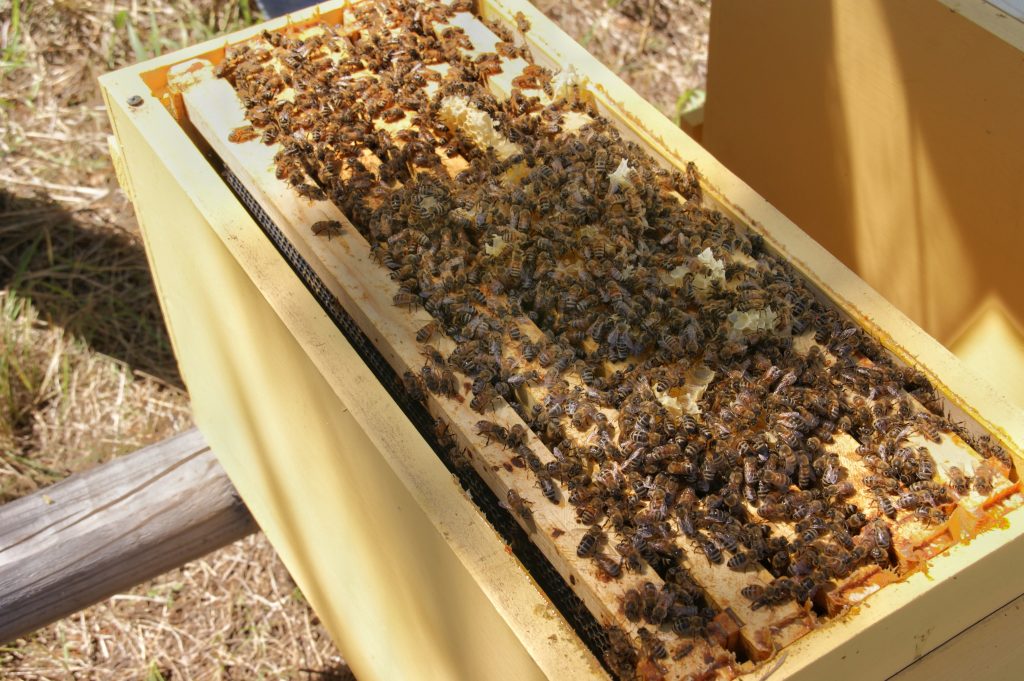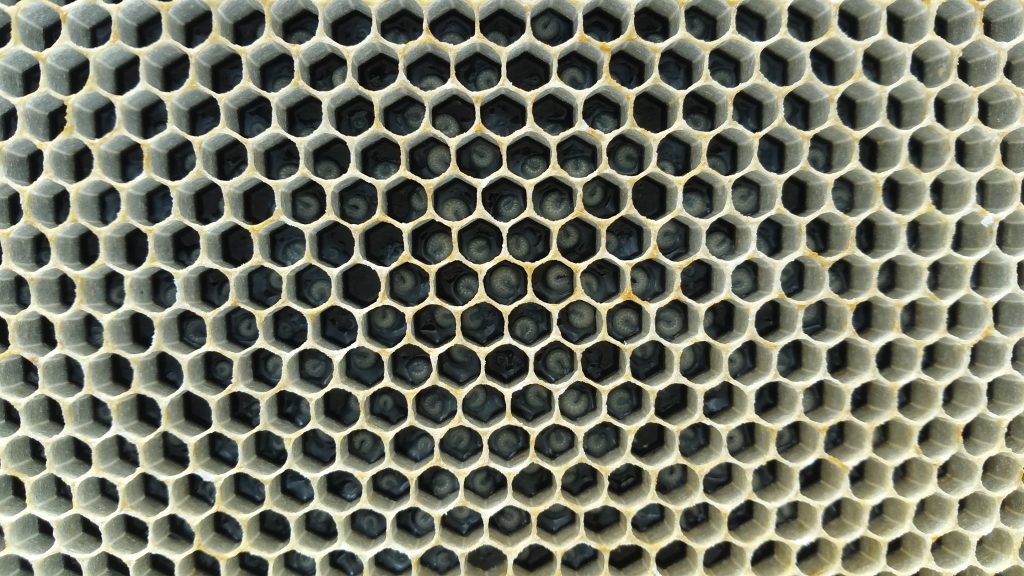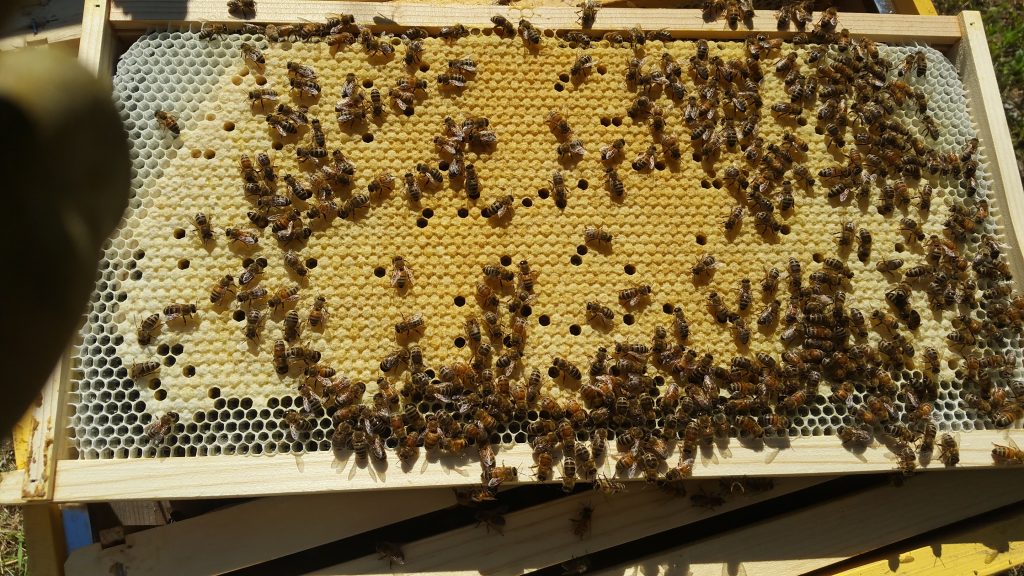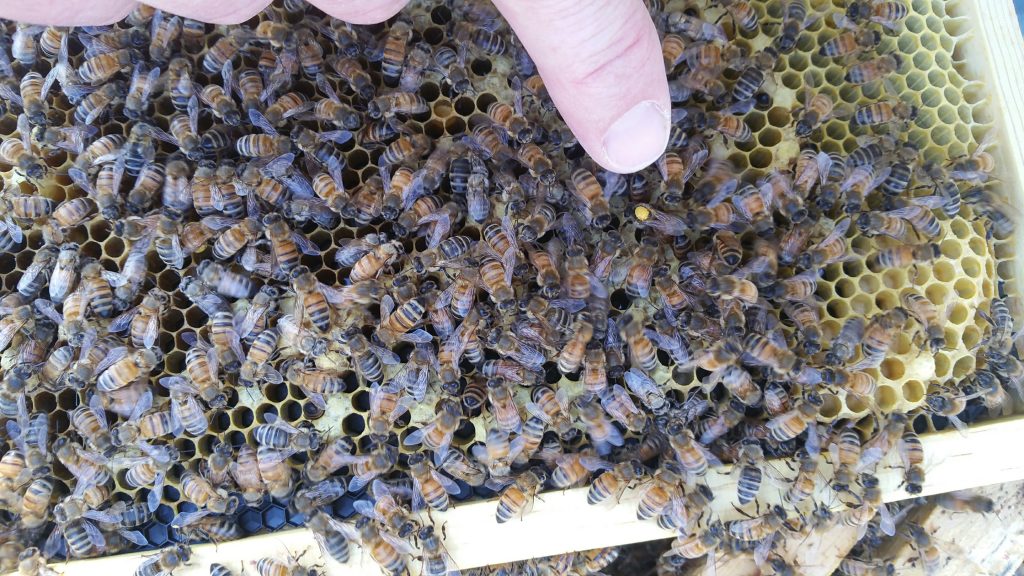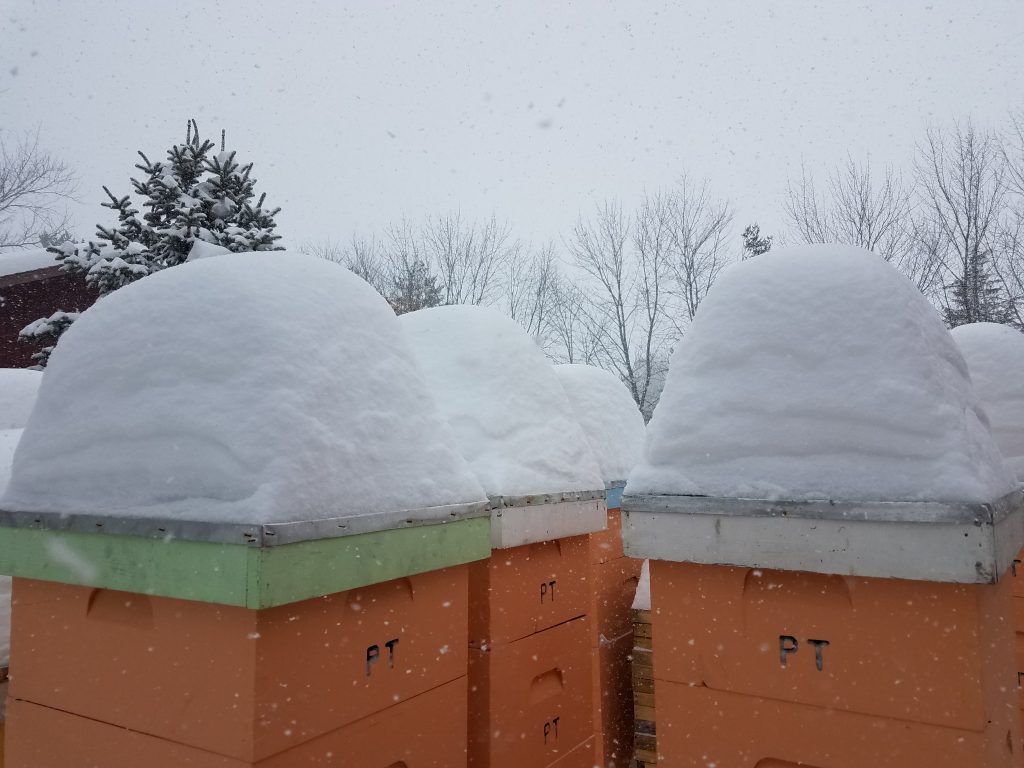It has been almost two years since my last blog entry on these pages. Been busy! The good thing is I’m back with two more years of beekeeping experience. Today, I would like to share something that I’m really passionate about here at Beau’s Bee Yards. That is the process we go through to select which of our queens to graft from. In essence, which hives show the desired characteristics we are looking for .
There is a long list of traits in honeybees one could select for, at least 12 -15 common ones. Everything from honey production to bee color(darker of lighter colored bees). Although it would be fantastic to produce a queen with all the traits on this long list, it would not be realistic in practice with limited labor and time. Instead, we decided to focus on a short list of four traits and once we master producing queens consistently with these four traits, we can select for additional traits later.
HONEY. Although our main income from beekeeping is NUC sales, honey sales still pays a good chunk of the bills. We record the amount of honey taken from each hive in the fall. Top 20% of the hives are recorded as possible candidates to graft from.
GENTLENESS OR CALMNESS. Beekeepers get asked a lot – do you get stung – do you get stung everyday- etc. A quote from a famous beekeeper, Mike Palmer, “Do you like bees that staple your socks to your ankles? I don’t like bees that staple my socks to my ankles.” Every time we are in a hive, we are looking for a hive of calm bees. Bees that are not aggressive. Bees boiling out at you when all you do is remove the cover are not pleasant. Not being able to see through your veil because angry bees clung to your veil trying to sting your face is bad. We mark aggressive hives as “DO NOT GRAFT” and are re-queened.
There are two types of calmness a hive must display before getting the OK mark. One is lack of aggressiveness mentioned above. They must sting very little or not at all. The other is how the bees move about on the frame. Some bees have a tendency to run around on the frame at high speeds in all different directions. We call these runners. We look for bees that are calm on the comb. Just walking around doing the work of house bees. One of the joys of beekeeping is to pause and enjoy some time with these bees. Much easier to find the queen among these walking bees. They get the OK mark.
OVER WINTERED BEES. This one is easy. Any live queen in the spring is a candidate to graft from.
HYGIENIC BEES. From Bee Informed Partnership: Hygienic behavior is a trait that correlates with resistance to chalkbrood, American Foulbrood, and Varroa mites. Bees with this trait are able to detect, uncap, and remove infected pupae before they become infectious, slowing the spread of disease and the population growth of the mite.
Testing shows this trait is present in only about 10% of hives. The trait is natural but not a common trait. By selecting for hygienic behavior, it has been shown that one can greatly increase this almost to 100% of your hives. That is our goal and we are very anxious and hopeful to see results. This will be the second year we will be testing for this trait.
Testing is basically killing some capped brood and waiting 24 hours to see if the bees uncap and remove the dead. The test consists of laying a frame of brood flat. Place a piece of 3″ PCV pipe on some capped brood and fill with liquid nitrogen which freeze-kills about 100 cells. Replace the frame in the hive and wait 24 hours. A hive is considered 100% hygienic if all cells within the circle are uncapped and cleaned out.
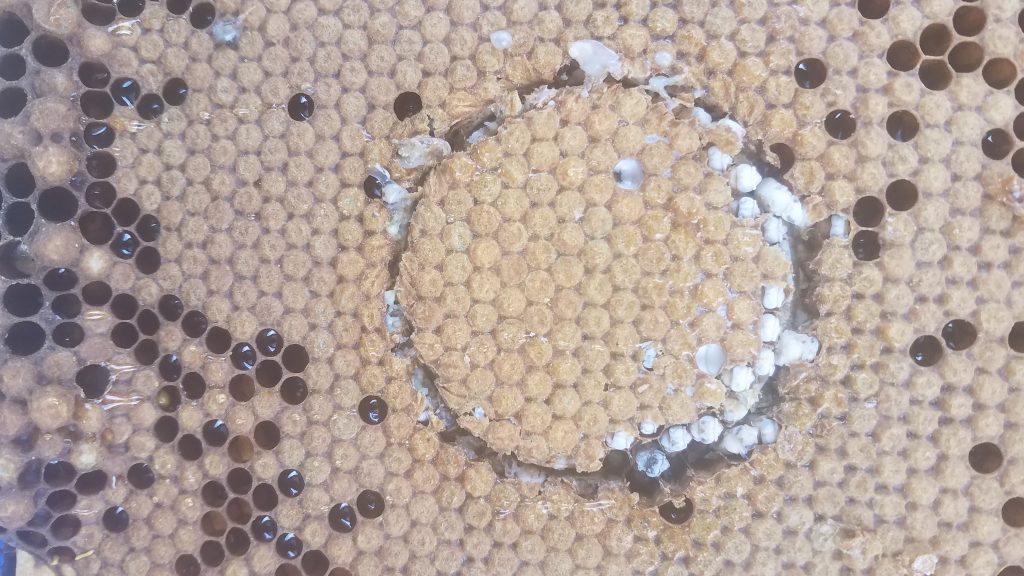
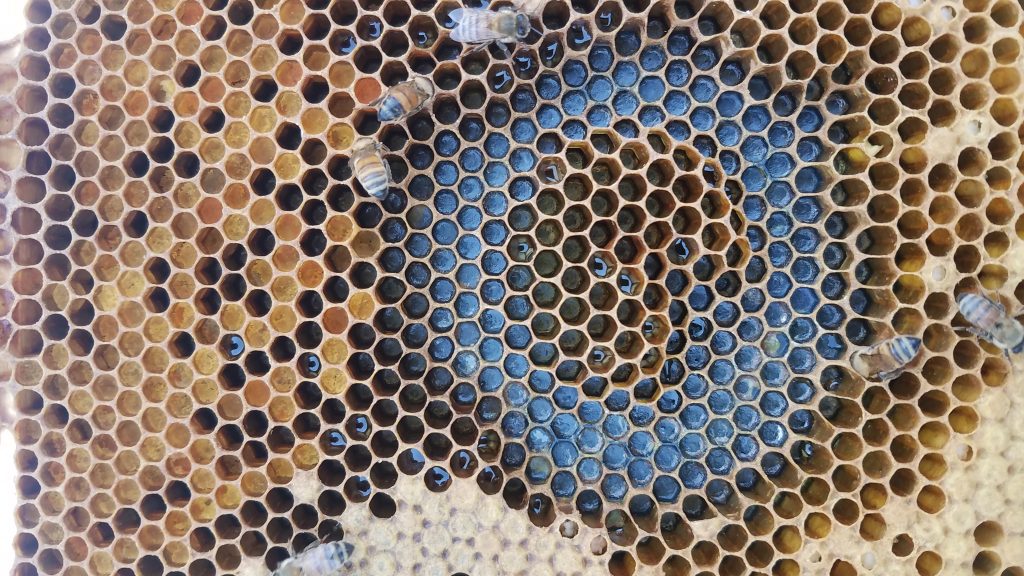
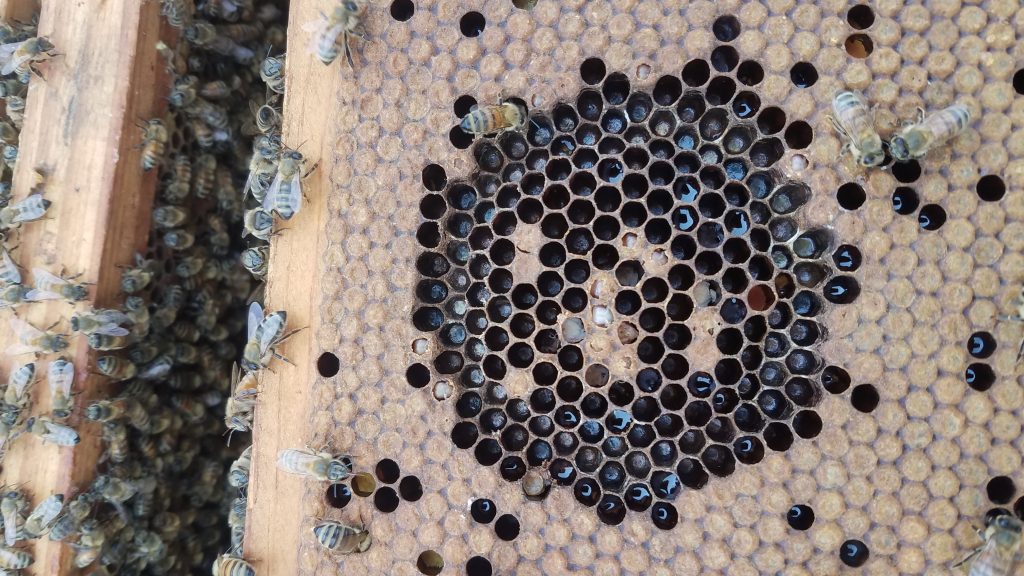
This last image is of a hive that did not make the grade. We decided to be very picky with this trait and only hives that test 100% hygienic make the grade for grafting.
This leaves a final number of hives that meet all four traits. Honey production, calmness, over-wintered, and hygienic behavior. From these, we pick breeder queens from which we graft new queens. These new queens are placed in NUCs for sale, used for increasing number of hives or replacing older queens. Thanks for reading! Bee Happy!

